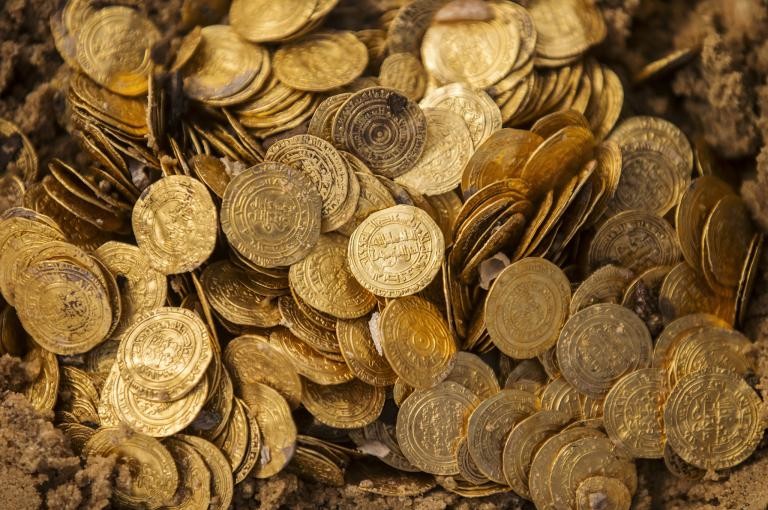Six sport divers thought they had found a few toy coins off the coast of Israel, but ended up getting much more than a penny for their thoughts when they realized the coins were real. The coins, located on the seabed near the ancient harbor of Caesarea, are dinars, the officially currency used by the Fatimid caliphate that ruled a majority of the Mediterranean in the second and third centuries A.D. After the accidental find, the divers notified the Israel Antiquities Authority as per Israeli law, as removing, selling, or failing to report a find can be punished with up to five years in jail. Unfortunately, despite the laws, the looting of archaeological sites continues to occur, creating a significant problem in the archaeological community.
When divers from the Marine Archaeology Unit excavated the site, they found many more than just the reported 30 or 40 coins (a number that usually indicates the presence of a hoard, but the largest hoard that had been found in Israel was only 376 Fatimid dinars uncovered in Ramle). After just two hours of digging, the team had found about one thousand coins. A couple weeks later, the team returned to the site and dug out another thousand coins. The ~2,000 coin cache is at least five times larger than the previous largest hoard found in Israel, and it is quite possibly the largest cache of gold coins ever reported in the eastern Mediterranean.
Archaeologists are especially excited about the find due to the type of coin found. According to the curator of the Israel Antiquities authority, Fatimid dinars are “first-class historical documents,” as they are engraved with the names of the caliphs they were minted under and with the date and location where they were minted. The majority of the coins from the hoard discovered by the divers are from official Fatimid mints in Egypt and North Africa, dating to the reigns of Caliphs al-Hakim and al-Zahir, while the earliest coin was minted in Palermo, Sicily. Some of the coins are in perfect condition, but other show the wear of years of circulation. Some coins even contain bite marks from merchants assessing the authenticity of the coin, making sure they were pure Fatimid gold.
A hoard of this size can provide great insight into the Fatimid economy, offering clues to the how long coins stayed in circulation, how coins were distributed, and what systems were used to produce the coins. Researchers are also looking into how the coin hoard came to rest on the seafloor. Based on the fact only whole and quarter dinars were found instead of small denominations or clippings of coins that would have been used for average transactions, most agree that the cache was serving an official purpose. Jakob Sharvit, director of the Marine Archaeology Unit, is confident that the coins came from a shipwreck of a vessel, perhaps carrying a tax payment or belonging to a merchant.
Authorities were quick to point out that the sport divers deserve utmost praise and respect for reporting the find, especially considering the prevalence of site-looting in Israel. However, whether they should be commended for their “hearts of gold” or respected simply as law-abiding citizens remains up to the individual.
picture credit: Jack Guez, AFP/GETTY for National Geographic
